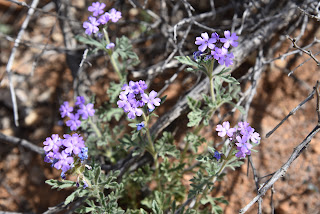MARICOPA TRAIL SEGMENT 22
BARTLETT DAM ROAD to CAMP CREEK FALLS
 |
| Camp Creek in Tonto National Forest |
Over its 315+-mile course, the Maricopa Trail unfurls its tendrils to link county regional parks, suburbs, urban public spaces, canals, historic paths, and remote stretches of national forest. To hike the full loop is tantamount to a walking tour of the Valley’s multi-faceted landscape.
 |
| Mountain vistas on the Maricopa Trail |
The epic non-motorized route that circles the Valley broke ground in 2007 in the Spur Cross Ranch Conservation Area, and the main loop was completed in 2018.
 |
| Hikers in the Camp Creek Falls grotto |
The trail continues to improve, evolve, build connectivity, and add length as it adapts to accommodate growing community interest and enthusiastic hiker, biker, and equestrian users. Built to encourage hikers of every ilk to get outdoors, the route’s many trailheads and neighborhood access points make it simple to hop on and off the trail from anywhere in the Valley, with two notable exceptions: the Spur Cross to Bronco and Bronco to Granite Mountain segments.
 |
| Segment 22 of the MT is wide and well signed |
Where the northernmost segments of the trail pass through Tonto National Forest, there’s an average of 13 miles between drive up trailheads. And, for seasoned, well-prepared trail users, that’s where the best stuff resides. Segment 22 which runs for 16-miles from the north border of Scottsdale’s McDowell Sonoran Preserve to the Bronco trailhead in Tonto National Forest was among the last passages to be completed.
 |
| The trail heads downhill on brushy foothills |
Rugged terrain, scoured washes, nasty back roads and stubborn rock contributed the difficulty encountered by trail construction crews. Then, in September and October 2020, the 15,000+-acre Sears Fire took a toll on several miles of the segment located roughly 20 miles northeast of Cave Creek.
 |
| Hazy Mt. Ord (center horizon) viewed from the trail |
Within months, work crews restored the damaged trail, fixing drainages and stabilizing eroded slopes. While the moderately difficult entire 12.6-mile Segment 22 hike can sound intimidating for some, there’s an option for an out-and-back day hike that includes a visit to one of the Valley’s most beloved natural wonders.
 |
| Morning vista on the Maricopa Trail |
Beginning along Bartlett Dam Road, Segment 22 heads north through a shadeless expanse of catclaw and saguaros. The path briefly traces a powerline, but then veers east into wash-riddled backcountry with unobstructed mountain views. The rocky domes of Kentuck Mountain (5,013 feet), Maverick Butte (4,870 feet), Humboldt Mountain (5, 204 feet)and St, Clair Mountain (3,252 feet) populate foreground with Mount Ord (7,128 feet) and the cloud bumping Mazatzal Range standing high over the Verde River Basin in the distance.
 |
| The Maricopa Trail crosses sandy Blue Wash |
The trail twists downhill, clinging to foothills and stony edges landing hikers at the sandy corridor of Blue Wash at the 3.4-mile point.
 |
| Where the MT crosses Bartlett Dam Road |
From a barbed wire and wood gate, an American flag planted on a prominent knoll with a Fresco Mines claim sign across the wash marks the beginning of a side trip to Camp Creek Falls.
 |
| Interesting rock formations throughout the hike |
The side trip veers left from the Maricopa Trail and follows the glassy slip of Camp Creek to a box canyon where a perennial stream of water spills about 20 feet over solid rock into a shallow plunge pool. Desert waterfalls are rare enough, but this one in its tiny grotto fringed by cottonwoods, willows and reeds is a real gem.
 |
| Camp Creek leads to a desert waterfall |
 |
| Flag (center) on knoll marks the falls side trip |
The spring-fed fount is a critical water source for the deer, javelina and myriad little critters that live in the surrounding desert and makes for a scenic stop over for both long-distance treks and short day hikes on the Maricopa Trail.
 |
| The spring-fed waters of Camp Creek Falls |
SUPPORT THE TRAIL:
If this wild and wonderful segment of the Maricopa Trail has inspired you, please consider supporting the effort by attending the Prickly Pedal Bike Race, the trail’s main fund-raising event.
Prickly Pedal on the Maricopa Trail will run 36 miles from Cave Creek to Lake Pleasant in Peoria.
The annual event is produced by Aravaipa Rides to benefit the Maricopa Trail + Park Foundation which funds trail building and maintenance projects.
Heads up that trail closures will be in effect along the racecourse.
RACE: 8:30 (pre-registration required)
EXPO & AFTER PARTY: 11 a.m. – 3 p.m.
Public is invited to enjoy the finish line party with beer garden, exhibitors, music, and fun.
LENGTH: 7 miles round trip, out-and back to the falls
RATING: moderate
ELEVATION: 2,833 – 3,303 feet (793 feet of elevation change)
GETTING THERE:
SOUTH TRAILHEAD
BARTLETT DAM ROAD-WILDCAT HILL OHV PARKING:
From Loop 101 in Scottsdale, take the Pima/Princess Drive exit 36 and go 13 miles north on Pima and turn right on Cave Creek Road. Continue 4.1 miles to Bartlett Dam Road, turn right and go 0.4-mile to a dirt road on the right 0.1-mile past the Tonto National Forest ranger station. Turn right and park along the dirt turn outs. Follow the Maricopa Trail signs to cross Bartlett Dam Road and continue north.
TONTO NATIONAL FOREST CAVE CREEK RANGER STATION:
40202 N. Cave Creek Road, Scottsdale.
May be closed on weekends and holidays.
Use the 0.2-mile connector that starts at the big Maricopa Trail kiosk.
INFO & MAPS:
https://www.maricopacountyparks.net/park-locator/maricopa-trail/
















































